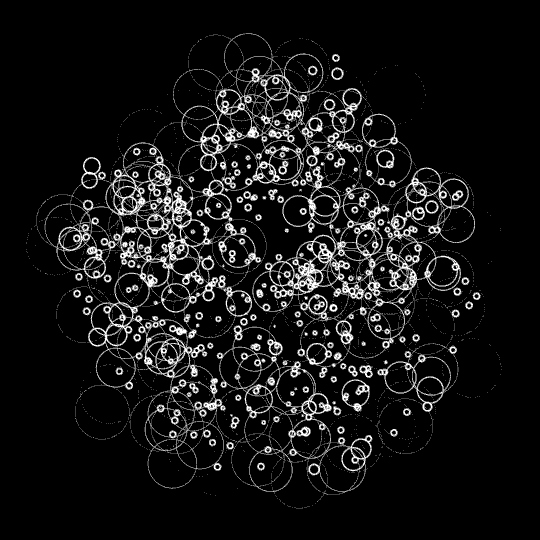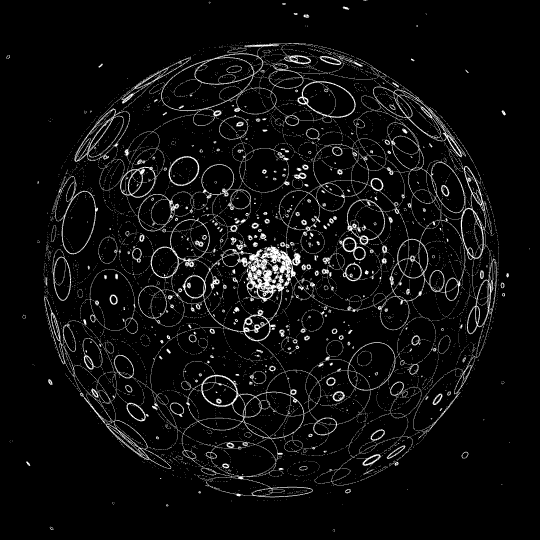

Have you ever wondered what makes cinnamon rolls so irresistible? I don’t know about you, but whenever I walk past a Cinnabon storefront (usually at a mall or airport), I am bombarded by an unmistakable and mouth-watering aroma. To be honest I’m not sure if there is a more appealing scent on the face of the earth. I haven’t actually eaten a Cinnabon roll in a long time, however I am told by experts in the matter that they are pretty delicious too.
But what exactly makes them smell and taste so wonderful?
Looking at the ingredient list does not answer this question. Yes, cinnamon probably plays a role, but it clearly isn’t the sole contributor. The other constituents don’t explain it either. Think about it: if I put white flour, hydrogenated oil, leavening agents, artificial flavors, cinnamon, and a whole lot of sugar in a bowl, it wouldn’t generate that delicious Cinnabon fragrance. Moreover, it wouldn’t even taste particularly good.
You can see where I’m going with this. Obviously, the cooking process is the mediating factor here. More specifically, I am referring to the Maillard reaction. The Maillard reaction is a chemical reaction between amino acids and reducing sugars, typically occurring in the presence of high heat (around 280-330 degrees F or 140-165 degrees Celsius). When this transpires, hundreds of flavor compounds are generated. Food generally becomes browner, and it tastes and smells extra enticing.
And this feature is obviously not exclusive to cinnamon rolls. The scent and flavor of roasted coffee, toasted marshmallows, fried bacon, grilled burgers, and freshly baked bread can all be attributed at least in part to chemical reaction.
Humans almost universally gravitate to foods that have been exposed to this process, although it’s not entirely clear why we like them so much. We do know that cooking increases energy availability from food by multiple mechanisms. Exposing food to heat helps unlock nutrients, degrades anti-nutrients, and reduces the overall cost of digestion. In the case of meat, cooking also reduces the risk of exposure to foodborne pathogens, which is a pretty big plus from a survival standpoint. So perhaps we have evolved to respond to the flavors associated with the Maillard reaction simply because it is inherently linked to cooking, and cooking enabled us to thrive.*
Interestingly, our affinity for these compounds also appears to be somewhat paradoxical, due to what we now know about their long term effects on our health. Medical science has gradually revealed that they have a dark side. And that brings me to our guest for this episode.
GUEST
On this episode of humanOS Radio, we welcome Pankaj Kapahi to the show. Pankaj is a professor at the Buck Institute, an independent biomedical research institute that is devoted solely to research on aging. His lab is exploring how nutrient status influences health and disease, and particularly how nutrients affect age-related changes in tissues and disease processes.
Dr. Kapahi has quite an impressive background in research. He, along with others, demonstrated that lifespan extension through inhibition of the TOR pathway overlaps with the observed effects of dietary restriction on lifespan and age-related diseases in model organisms. His lab has extensively explored the role of diet and circadian clocks in aging and neurodegeneration.
More recently, he and his team have also begun to investigate the role of advanced glycation end products (also known as AGEs) in the aging process. Advanced glycation end products are compounds that are formed when proteins or lipids become glycated, as a result of being exposed to sugars.
As I mentioned above, this has been carefully studied and exploited by the food industry for decades, because of its effects on sensory qualities of food. However, it was only recognized comparatively recently that AGEs may impair our health and function over time. This encompasses not just dietary AGEs, but also AGEs that are generated endogenously – within the body – when it processes sugars.
Aptly enough, the formation and accumulation of AGEs is a hallmark of age. This is especially evident in individuals with insulin resistance and type 2 diabetes, due to the increased availability of glucose in circulation. AGEs wreak havoc by binding with cell surface receptors and cross-linking with body proteins, altering their structure and function. This produces a range of deleterious effects throughout the body. Just as one example, patients with osteoarthritis appear to accumulate AGEs in articular cartilage. This makes the tissue stiffer and more brittle, and may render it more susceptible to damage.
So, how can we reduce our exposure to advanced glycation end products in the food that we eat? And how can we control the formation of AGEs inside the body? To learn more, check out the interview below!
*One big problem with this explanation is that other primates, and even rodents, have also been shown to prefer these foods in controlled experiments, despite never cooking anything. So, your guess is as good as mine!
LISTEN HERE
On Soundcloud | Spotify | Apple Podcasts | Google Play | Stitcher | iHeartRadio | Overcast.fm | YouTube
YOUTUBE
SUPPORT
Have you considered becoming a Pro member of humanOS.me? It costs just $9.99 per month, and when you go Pro, you get access to all our courses, tools, recipes, and workouts. Pro members also support our work on blogs and podcasts, so thanks!
LEAVE A REVIEW
If you think other people would benefit from listening to this show, you can help us spread the word by leaving a review at iTunes. Positive reviews really help raise the profile of our show!
TRANSCRIPT
| Pankaj Kapahi: | 00:07 | Our dream situation would be if we can lower the levels of AGEs that you can actually have your cake and eat it too and not get the problems that we normally associated with hyperglycemia. |
| Kendall Kendrick: | humanOS, learn, master, achieve. | |
| Dan Pardi: | 00:25 | Hello everyone. Welcome back. Today I’d like to welcome Pankaj Kapahi to humanOS Radio. Pankaj is a professor at the Buck Institute and for those who might not be familiar with it, the Buck Institute is an independent biomedical research institute that just so happens to be in my backyard in Marin County, California that is devoted solely to research on aging. Pankaj has a very impressive research background as he discovered the role of something called TOR or target of rapamycin in mediating the effects of dietary restriction on health and longevity. More recently, his lab has been working on how molecular clocks and fat metabolism influence the effects of dietary restriction, but he and his team are also working on advanced glycation end products or AGEs. Now, what are AGEs? Well if you’ve ever browned meat or baked bread, you’ve seen the formation of them in action and unfortunately they are delicious. So our palate nudges us to consume them, but they are likely an underappreciated contributor to the aging process. So first Pankaj welcome to humanOS radio. It’s great to have you with us. |
| Pankaj Kapahi: | Thank you very much Dan. Great to be here. | |
| Dan Pardi: | 00:33 | What exactly are advanced glycation end products? |
| Pankaj Kapahi: | So every cell that utilizes glucose splits glucose into three carbon atom molecules. And unfortunately not all metabolic reactions are clean in the body, which means when one product is being made to another product, there are some byproducts that are made. So one of the byproducts of utilizing glucose is methylglyoxal and there are other reactive carbonyls that are made and these byproducts increase the formation of advanced glycation end products. So the idea is that they’re reactive and then they will bind amino acids like lysines and arginines and then they will modify them. These reactions are irreversible, which means they will accumulate in the body and there isn’t an easy way to get rid of them. And that’s the problem with advanced glycation end products and they’re build up is damaging in several diseases. | |
| Dan Pardi: | 01:34 | How were they discovered? |
| Pankaj Kapahi: | Very old literature by Monnier and Cerami where they identify the reaction to that is called the Maillard reaction. The science is almost more than a hundred years old and they discovered the effects of what we come to know as glycooxidative stress modification of like killing agents on amino acids. | |
| Dan Pardi: | 01:36 | It was hypothesized decades ago that AGEs might play a role in the aging process. Why has it been so difficult to make a causal link between AGEs and age-related disease in humans? |
| Pankaj Kapahi: | I’d read about advanced glycation end products when I was a teenager and I got very excited about this and you’re right, it’s not had the traction I think it deserves and one of the primary reasons I think is hard to quantify the buildup of these products. I mean the way I look at it is aging is less of biology and more of chemistry in the sense that biology is a program that’s there to help us develop and maintain health, but with age then things fall apart. That’s more like the process of rusting. That’s where molecules like advanced glycation end products and those processes become critical and are underappreciated because they’re very heterogeneous. So there are many types of reactive carbonyls that modify amino acids, DNA and lipids. They’re hard to measure and they have not really been studied in what I’d call more genetically tractable model. | |
| Pankaj Kapahi: | 01:39 | So there are over 10,000 papers showing the existence of this and their accumulation with age, but whether any one of them or some of them are causal has been harder to understand. |
| Dan Pardi: | Where does the Maillard reaction occur in the body? | |
| Pankaj Kapahi: | 02:30 | It’s happening both in the mitochondria and outside. The unfortunate thing is some of these reactive molecules like methylglyoxal can actually go across membranes. There is number of enzymes that have evolved to deal with them. They’re in the mitochondria, but also in the nucleus and in every tissue. So there are defenses in place in multiple tissues or multiple compartments to make sure that you’re not accumulating these reactive dicarbonyls, which make advanced glycation end products. |
| Dan Pardi: | They’re occurring in the body all the time and we have then a detoxification systems for them. What is the major pathway that AGEs are detoxified? | |
| Pankaj Kapahi: | 02:31 | Multiple glyoxalase is now being discovered. So I think it almost argues for the importance of reactive carbonyls and argue that there’s so many enzymes in place, then they must have been a role for them. And that’s what we’re finding that if you mutate one, then you build up significantly. What’s even more interesting is if you knock two of them out then effects are additive. So it argues that multiple redundant enzymatic defenses are in place to keep these glyoxylases at bay. This is only the first part of the story. After they modify macromolecules like lipids, amino acids or proteins, they can also be removed after that. And that happens more through normal protein turnover. AGEs are then found in our serum cerebral spinal fluid and they’re excreted through the urine. So it’s especially interesting under situations of kidney disease. So in chronic kidney disease, there’s actually a build up of advanced glycation end products. And the idea is that it causes inflammation. So this is a causative feedback. If the kidney is already damaged, it’s not going to clear advanced glycation end products, which is going to further enhance the inflammation by the buildup of AGEs. |
| Pankaj Kapahi: | Those are some of the things that are known. I think there may be other defenses that we don’t know about, but those are the two main things we know about in terms of removal of AGEs. One, by dealing with the precursor of AGEs and secondly by excreting the fully formed advanced glycation end products, | |
| Dan Pardi: | 02:49 | There’s late and early stage Maillard products that earlier steps of AGE formation may be reversible. The later ones, once AGE is fully formed, they’re just hard to break down. Can both be a target for interventions that could help to either keep them at bay or to reduce them once they’ve formed? |
| Pankaj Kapahi: | Well, a very interesting clinical trial was done for stopping the cumulation. It was an AGE breaker, so the idea was it would stop the later product from forming, but unfortunately such antidotes have harmful effects because you can imagine if there’s something that’s reactive that is trying to block the formation of AGEs, the antidote might itself be toxic. Unfortunately that clinical trial, even though it had great data from animal studies, in humans there were some side effects and that had to be stopped. So I think that’s another reason that perhaps the field of advanced glycation end products got stalled. But to your question, I think there might be more to gain by stopping the precursors of AGEs from forming and that’s how the body seems to do it. | |
| Pankaj Kapahi: | 02:59 | The approach we’re using in the lab is letting the organism tell us how to deal with this best. When you use the power of genetics, you can let the organism tell you if there is more stress due to let’s say glucose or build up of these reactive dicarbonyls, which would cause AGEs, how would a cell deal with it? And we’re learning lots of new things from the cells this way. |
| Dan Pardi: | Is there any physiological function for AGEs? Previously we thought reactive oxygen species were simply a byproduct that was harmful, but we found out that they actually have a physiological role as well. Has a physiological role for AGEs been identified or is it simply at this point just a problematic side effect of biology and chemistry? | |
| Pankaj Kapahi: | 03:48 | The history of methylglyoxal is over a hundred years old as well. It was initially ignored by biochemists because this is a metabolic byproduct. It’s not a reaction for which there is an enzyme. So initially biochemists focused on the reaction where there was an enzyme and I think that some of these metabolic byproducts might be relevant for aging, so that’s why we [inaudible 00:07:59]. There might be a signaling role for AGEs, like for example, when you have increased glycolysis, you want to shut down utilizing fat. There are certain situations where you want to use high glucose. For example, under states of high growth, so we think they definitely regulate physiology and under certain situations that might be beneficial. |
| Dan Pardi: | In the beginning, I alluded to that AGEs are found in another source, so we know that they’re produced endogenously, but we also know that they’re produced in our diet. How can people reduce AGEs in their food that they’re eating? Are there specific foods or cooking techniques that should be avoided? | |
| Pankaj Kapahi: | 04:00 | Since I’ve gotten into this research, I’ve changed my lifestyle a little bit, so I am not popular at parties because every time there’s barbecued food in front of me, I can’t help telling people that this creates a formation of AGEs that are detrimental to us even when we consume them. So we’re making AGEs endogenously, but we are also getting it from our diet and also from our microbiome in fact. Any cell that uses glucose actually makes AGEs so bacteria are also making AGEs. So how do you reduce the intake of AGEs, avoid cooking techniques that involve dry heat, the oven or using barbecue or wherever there’s charring and browning. Those are the things to avoid. |
| Pankaj Kapahi: | What I’ve started doing more is steaming and boiling foods where when you need to cook. | |
| Dan Pardi: | 04:03 | A great product to be invented would be something that would allow us to cook in more a gentle manner by lower heat that doesn’t produce the AGEs, but could somehow replicate the flavor of these AGEs and the crispiness that is done through frying and barbecuing. Any food scientist out there, let’s work on that. |
| Pankaj Kapahi: | Yeah. Why is it tasty for us? This is another question we talk about at lab meeting and we don’t have an answer, but interestingly we’ve found that even invertebrates find the AGEs tasty. | |
| Dan Pardi: | 04:30 | We’ve been cooking with fire for hundreds of thousands of years. That’s probably why we have multiple pathways that are dedicated to help handle these, but our environment has changed so rapidly. We might just be consuming foods that are outside of the window of what the body can handle successfully. Let’s talk about why these are problematic. I understand that they accumulate. We can go into the RAGE pathway, which is the receptor for AGE. How does this contribute to chronic inflammation? |
| Pankaj Kapahi: | Yeah so one of deleterious side effects of having advanced glycation end products is that it enhances inflammation. One of the key receptors that has been defined or this is the activation of RAGE by the binding of an AGE, a molecule to RAGE. | |
| Pankaj Kapahi: | 04:40 | It argued that AGEs are not just building up and inert, but they can play a signaling role and they can activate inflammation. So it gave a useful therapeutic target and inhibiting RAGEs pharmacologically or genetically has been shown to be protective. However, what we are learning in the lab is that AGEs bind many other molecules and RAGE is just one of the receptors, so that’s the exciting work we’re getting into to find other targets for AGEs, which might explain lots of other behaviors like why we eat more, why it affects obesity, why it causes neurodegeneration, and why it causes inflammation. |
| Dan Pardi: | Once AGEs bind to the receptor, there’s a signaling cascade that will increase nuclear factor-kappa beta, oxidative stress, inflammation. These are all things that we know associate with chronic disease. One disease that comes to mind has been known for a long time is the association with diabetes and microvascular complications. What is this connection between AGEs and vascular health? | |
| Pankaj Kapahi: | 05:47 | The strongest evidence for AGEs has come from the link between diabetic complications and AGEs. If you are in a state of hyperglycemia, then you’re more likely to build up the precursors for AGEs, that would then elevate the levels of AGEs systemically. If you do that for long enough, you’re prone to several diabetic complications. We’re not talking about diabetes per se, which is simply defined as hyperglycemia. We are saying that if you have sustained hyperglycemia over decades then you increase the risk for several disorders. These include retinopathy, nephropathy or risk for chronic kidney disease, more than half the patients who have chronic kidney disease have diabetes. It’s one of the leading contributors to also cardiovascular diseases, increased risk of stroke, and also they’re learning recently that diabetics have two to four fold risk for Parkinson’s and Alzheimer’s as well. |
| Pankaj Kapahi: | So if you have diabetes, there’s an increased risk for several diseases, which we think are all part of the diabetic complications. So one of our ideas is that it’s not glucose that’s causing these diseases. The most damaging product that you’re making in diabetes might be the downstream advanced glycation end products. They are the ones that are contributing to these multiple diseases simultaneously. | |
| Dan Pardi: | 06:01 | Is it particularly hyperglycemic states that are problematic or can AGEs be formed under normal glucose diet wrapped in whole foods, traditional cultures some had very high carbohydrate diets and they don’t seem to have as much chronic disease. Now there have a very large phytochemical load that comes with the natural food and natural form. So can some of the effects of AGE formation be offset by certain phytochemicals or other factors that are part of the diet. And do you have an entirely different situation where you have, let’s say the same percentage carbohydrates in your diet, but it’s in a whole different form of refined foods, low phytochemical load. What’s your thinking around there? |
| Pankaj Kapahi: | So the load of advanced glycation end products is going to depend on multiple factors. So this includes the consumption of AGEs from the diet. So as has been noted, just an increased consumption of more cooked food can actually increase the risk of diabetes. So that’s definitely one contributor. The second part is the amount of glucose, carbohydrates they are taking mainly simple glucose molecule that will increase glycolysis. You will build up AGEs at a faster rate. And the third part of the equation for which we need more understanding in terms of precision medicine is different genetic factors that are important in the detoxification of AGEs. So as you said, someone could be eating normal amounts of glucose, but still build up AGEs and that’s already been known, that AGEs build up also under normal aging. But the question is in certain situations it’s not going to be toxic. It’s not going to cross this threshold where it becomes pathological. But in certain people they may not even have diabetes and they’ll start seeing some of the deleterious effect of AGEs. So we need to understand the genetics better to understand who are the people who are more at risk either through dietary consumption, through intake of carbohydrates or just the genetic factors that are important for detoxification. | |
| Dan Pardi: | 06:17 | So this is definitely a moving target here. So if there’s genetic susceptibility, there’s diet and percentage of macronutrients, possibly time of life, you could plausibly argue that having a lower carbohydrate diet throughout life might help to offset aging as well by reducing AGEs. |
| Pankaj Kapahi: | That’s true. So lower carbohydrate diet has been shown to extend life span. And one of the factors that you definitely see improvement on is reducing advanced glycation end products. Definitely, I think it’s one of the contributors and I think now more people are paying attention to the effects of AGEs on multiple systemic affects. | |
| Dan Pardi: | 07:00 | You mentioned the connection between neurodegenerative diseases. What is the evidence on AGEs and some of these conditions beyond what you’ve mentioned so far? Let’s start with Parkinson’s disease. |
| Pankaj Kapahi: | Parkinson’s disease is perhaps one of the best examples because we know about seven key genes that have been associated with early onset Parkinson’s disease and one of those genes is called DJ-1 and that gene turns out to be a glyoxalase. So it’s one of those enzymes we described like a glyoxalase whose function would be to detoxify the precursors of AGEs. So we’re finding, for example, the loss of that builds up the advanced glycation end products and leads to neurodegeneration. Just like that, the evidence is building up because now when you look at patients with Alzheimer’s or Parkinson’s disease, post-mortem brains of people with neurodegenerative diseases has shown that there’s a significant build up of AGEs in their brains. | |
| Dan Pardi: | 07:20 | Plaques extracted from Alzheimer’s diseased brains show three fold, increase in AGE content versus age matched healthy. They seem to be accumulating in the plaques in Alzheimer’s. Is this a line that is being investigated carefully now as well, the connection between AGEs and Alzheimer’s disease? |
| Pankaj Kapahi: | Well, that’s true. That’s one of the projects that’s going on in our lab. If you can reduce the buildup of AGEs, does that protect against pathogenesis and Alzheimer’s disease and the basis of a number of diseases may be common. The idea is that AGEs are enhancing the vulnerability of proteins to aggregate. If you’re seeing more cellular stress and if you’re seeing more protein aggregates that might hasten the process in some of these neurodegenerative diseases. | |
| Dan Pardi: | 07:38 | If we’re thinking about protein aggregates, it makes me think about fasting. That might be something that is beneficial to clearing out protein aggregates in the body. Has there been a connection or any fasting research that you’ve seen that has identified a reduction in AGEs, or is that something that has not yet been looked at? |
| Pankaj Kapahi: | Some of the most dramatic effects we have seen in our lab on reducing AGEs has been under fasting. Even if you take a genetic mutant that is more prone to building advanced glycation end products. So this is an animal that’s missing the glyoxalase, so this can make almost a thousand fold more precursors of the advanced glycation end products. This animal fasted shows the lifespans almost no different from the control animal. The effect of fasting can be that dramatic in these animals. There’s a lot of research arguing that fasting can reverse the effects of diabetes. It definitely applies here because it would work at many levels from the production of AGEs, to the detoxification or the precursor of AGEs and to the clearance of the more mature forms of AGEs. | |
| Dan Pardi: | 08:20 | That’s great news. I just saw a paper yesterday [inaudible 00:17:51] two years of fasting completely reversed diabetes. Not only did it have an improvement in HbA1c and other markers of diabetes, but they actually were able to tolerate carbohydrates again, so ARCs are part of the pathway to detoxify. So NADPH-dependent aldo-keto reductases. There’s great interest in NAD+ stimulators, NMN, or NR. These are supplements that you can take now. David Sinclair’s doing a lot of work with that, others as well. Could supplementation with NAD+ assist ARCs in detoxifying AGEs as we get older? |
| Pankaj Kapahi: | Yes, definitely. That’s a very interesting idea and I think we’re exploring number of commonly used drugs and supplements in our lab to see which ones influence advanced glycation end products and nicotinamide is potentially one of them. | |
| Dan Pardi: | 08:32 | One paper that I found particularly exciting was this one that examined the synergistic impact of combined polyphenol therapy, so Hesperetin and Resveratrol in improving AGE outcome, so one induced glyoxalase 1 and also had an impact on activating NRF2, both of which can seem to detoxify and remove AGEs. Is there any additional work that you are aware of looking at natural phytochemicals to improve AGE situation? |
| Pankaj Kapahi: | A number of researchers are working on this. I think the paper you mentioned is one of the recent studies, but I think there are a lot of active researchers in this area. | |
| Dan Pardi: | 09:12 | It’s always a little frustrating to me that we live in a world where if you can’t capitalize on it, it tends to get underfunded and yet it’s nice to see when work on these compounds that reinforce a healthy lifestyle, things that are available to us in the grocery store right now, reducing the amount of AGEs that you consume seems like a smart approach, but you’re eating anything like barbecue, making sure that you’re getting with some phytochemicals. You could even just start with Hesperetin and Resveratrol, so that’s going to be like lemons on your food with a small glass red wine maybe, and that might handle it better than if you were to eat the barbecue with a beer. |
| Pankaj Kapahi: | Eating the rainbow was always good advice, salad and greens on the side. I think that’s the best thing you can do. Yeah. | |
| Dan Pardi: | 09:17 | AGEs are talked about less often in the public sphere and through this excellent review that you just did, which I learned a ton from are championing that this needs to be part of the conversation. What do you think are the next critical questions to address in order to advance the field a step farther? |
| Pankaj Kapahi: | This area is ripe for a lot of discovery. One of the things I think we will see a lot more with the help of genetics is how diabetics become vulnerable to different diabetic complications based on your genetics. So for example, imagine you come in with diabetes, but it could be predicted early on that you are more likely to have peripheral neuropathy or retinopathy based on your genetics. Having this sort of information could be really game changing because through understanding how the AGEs affect several diseases. We could have a better lifestyle approaches for people who have diabetes or at more risk for particular disorders. Understanding the genetics of that and how the build up of AGEs causes pathologies in different tissues is definitely one area that’s going to be very exciting. | |
| Pankaj Kapahi: | 09:32 | The other area that you already touched upon, the therapeutics. I think we should be able to see a lot more therapeutics in this area because as we’re learning from the genetics of simple invertebrate organisms, they also build up advanced glycation end products and they also have the same enzyme systems in place to deal with them so we will be able to use the power of genetics in these model organisms to find better therapeutics which would be relevant for mammal and we already have a few in our lab that we are actively exploring. |
| Pankaj Kapahi: | These are some of the areas where we could do a lot more both in terms of understanding the disease process and coming up with better therapeutics, which specifically deal with AGEs as a target. We are also learning a lot more about AGEs and its role in cancer and inflammation and many other diseases, as that gets built up, the case for understanding the genetics for all AGEs are built up and the therapeutics will just get stronger and stronger. | |
| Dan Pardi: | 09:43 | You mentioned how fasting was useful. What was the fasting regimen in that study? |
| Pankaj Kapahi: | We’ve fasted worms, C elegans that we use for our research which build up AGEs. We’ve found that they build up almost thousand fold more AGEs and when we fast them we found that they don’t show the pathology that we see in the normal mutant animal and the pathologies we found that were rescued by fasting include neurodegeneration and life span. The fasting regime that we used we’ve done complete starvation in these, but we’ve also done dietary restriction, which in the case of C elegans we limited the food by a quarter to a tenth of what it normally eats and that can rescue the pathological effects. | |
| Dan Pardi: | 10:10 | But that was more chronic than having them, let’s say fast once a month or periodically, whatever their timescale was. |
| Pankaj Kapahi: | Correct. We haven’t done all the different forms of fasting. Also, one thing to add was adding glucose to the media exacerbated the effect. So glucose again is a key player here, simple sugars, so having a more complex carbohydrate diet, reducing your glycemic index might be one of the key things here to lower the production of AGEs. | |
| Dan Pardi: | 10:26 | Is it a certain temperature that we want to stay below for cooking? |
| Pankaj Kapahi: | I don’t have as much knowledge on this, but what I do know is as you increase the temperature, the number of chemical species you end up generating is significantly higher and this was beyond AGEs, so the lower you can stay in terms of the heat you use, the better it is. The slow cooking would also be beneficial than a higher heat cooking. I’ll add one more idea. One of the key hypothesis we are testing to our work on advanced glycation end products is that it’s not glucose that is the key molecule that causes pathology in diabetes, but it’s the build up of the downstream products like the AGEs that are the real targets. Of course, lowering glucose helps in diabetes and will help reduce AGEs, but if we understand the real culprits, then we can come up with better therapeutics to both deal with specific diabetic pathologies and lower the mortality risk due to diabetes. | |
| Dan Pardi: | 11:05 | You could imagine a scenario where somebody has a diet that does contain carbohydrates but has other factors that’s a part of it that is limiting the propagators that turn into these end products that are problematic. That could be a fruitful area for intervention and if you can cut them off then you’re going to also limit the late stage implementation of AGEs into your cellular structures. So on one hand the earlier forms cause inflammation, the late stage AGEs are harder to get rid of. There is some biotechnology techniques looking into it, but in the meantime cutting off the source would be a good way to go about it. |
| Pankaj Kapahi: | Our dream situation would be that if we can lower the levels of AGEs that you can actually have your cake and eat it too and actually not get the problems that we normally associated with hyperglycemia. | |
| Dan Pardi: | 11:26 | Pankaj thank you so much for your time and your work here. It’s opened my eyes to a lot of things. We have a diet as part of something on humanOS called the flash diet, and simple food diet and we’ve been recommending lighter cooking, stewing, slow cooking techniques for a long time with the recognition that AGEs do contribute to some of these pathologies. But my knowledge here deepened a lot with your review, so thank you for aggregating all this information into this excellent review for the different projects you’ve got going on. |
| Pankaj Kapahi: | Thank you very much for having me. | |
| Kendall Kendrick: | 12:19 | Thanks for listening and come visit us soon at humanOS.me. |
The post The Role of Advanced Glycation End Products in Aging and Disease. Podcast with Pankaj Kapahi appeared first on humanOS.me.

















